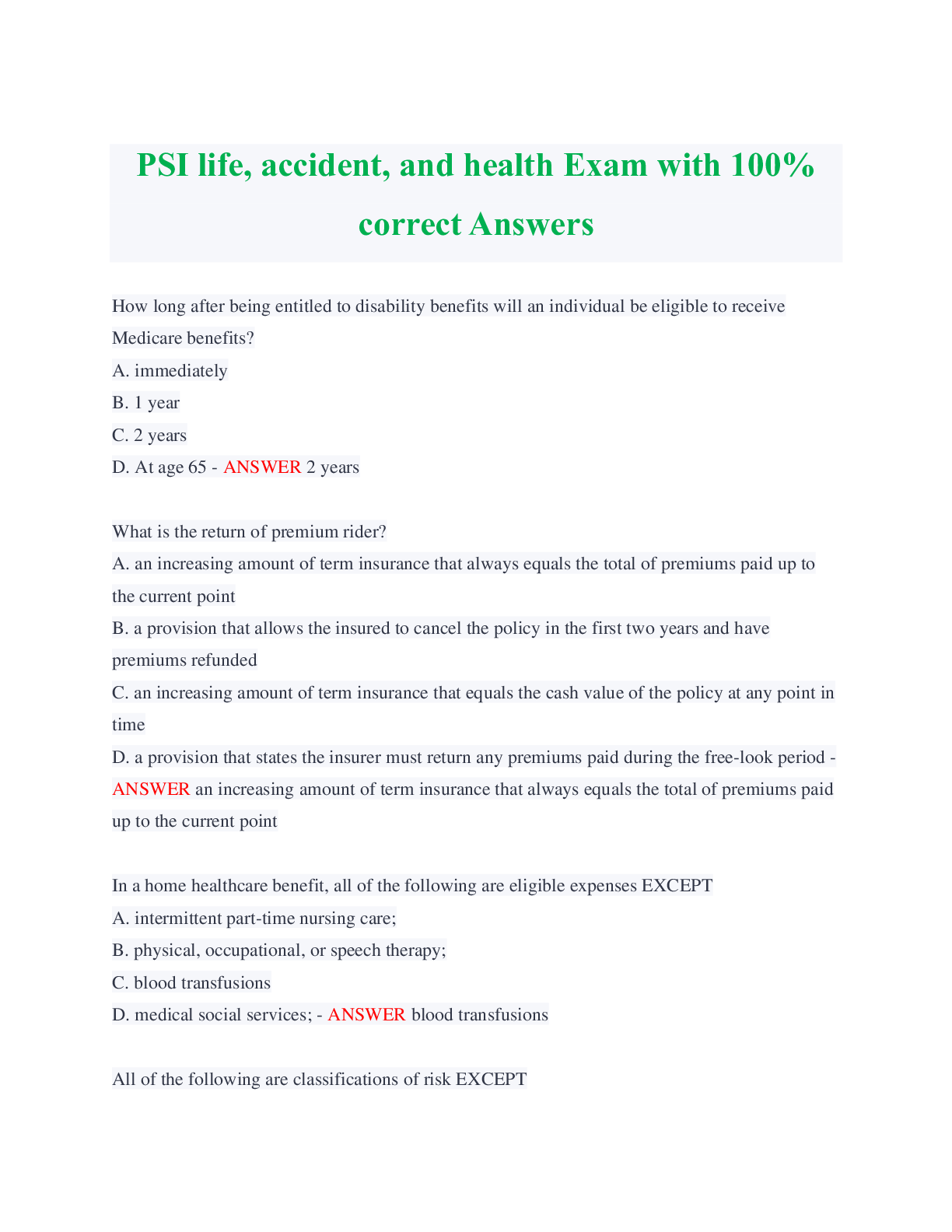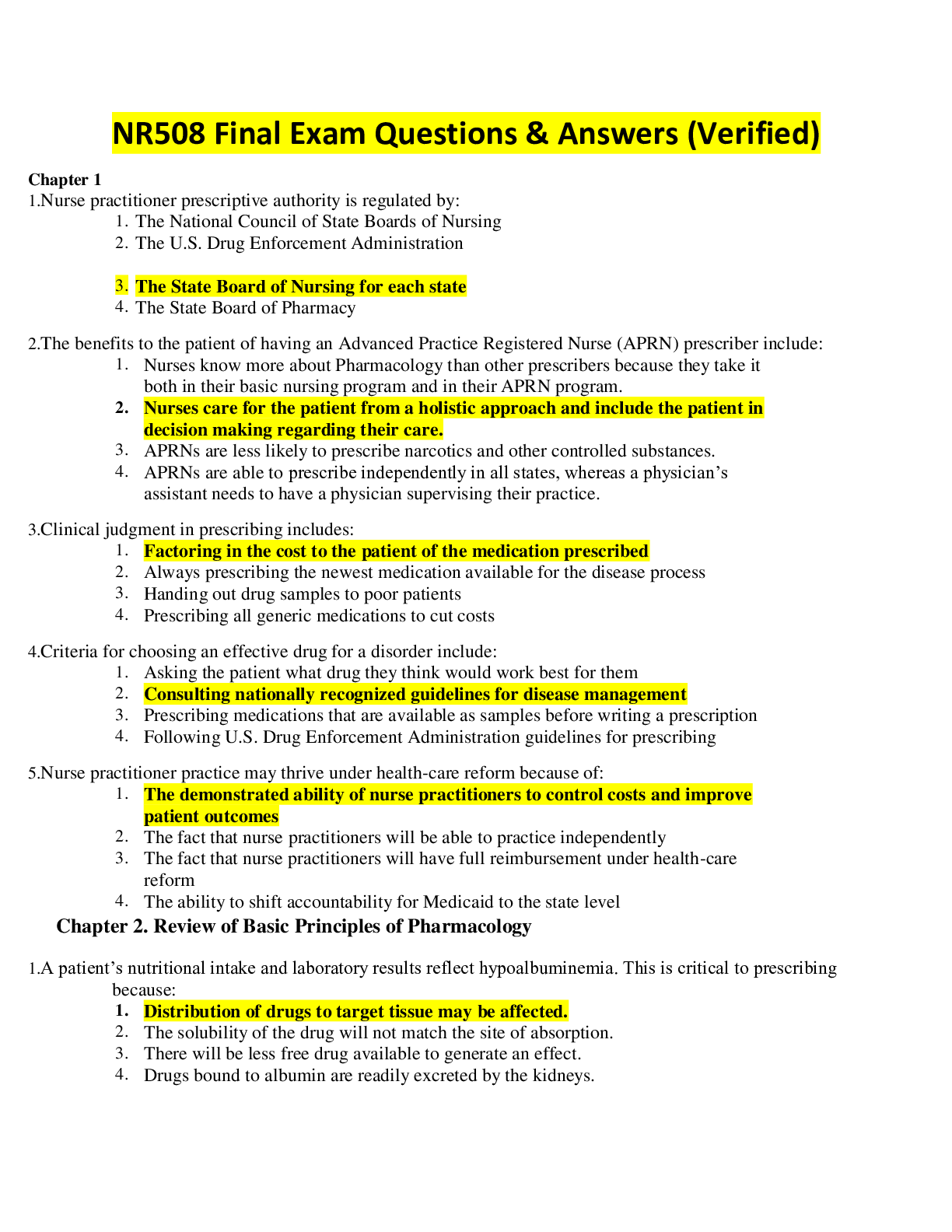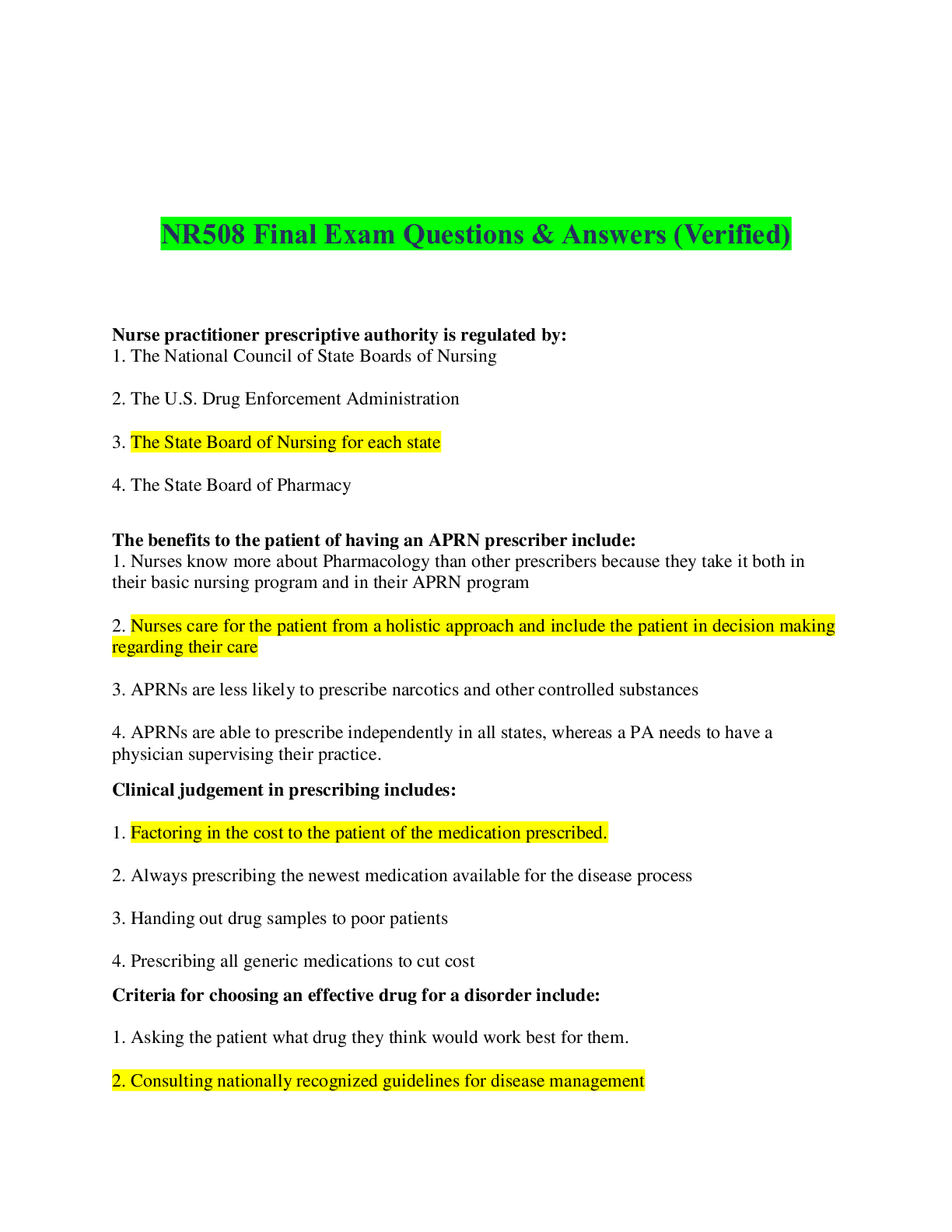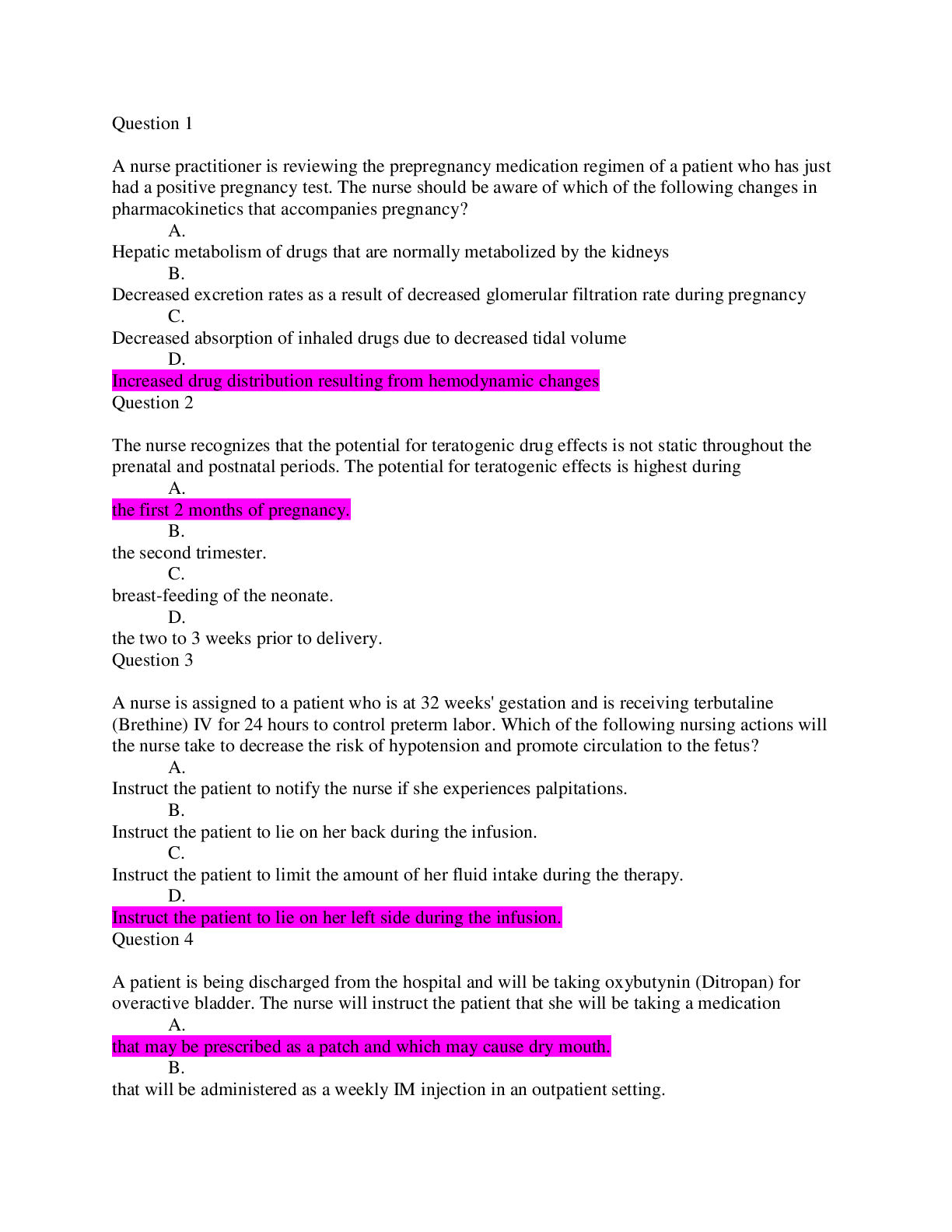LETRS MODULE Final Exam Questions and Answers
Document Content and Description Below
phoneme - ANSWER in language, the smallest distinctive sound unit Grapheme - ANSWER the written or printed representation of a phoneme Phonics - ANSWER The predictable relationship between phone... mes and graphemes Phonemic Awareness - ANSWER The ability to hear, identify,and manipulate the individual sounds, phonemes, in oral language. phonological awareness - ANSWER the ability to reflect on and manipulate the sound structure of spoken language syllable - ANSWER a word part that contains a vowel, or, in spoken language, a vowel sound. Onset and Rime - ANSWER -Parts of spoken language that are smaller than syllables but larger than phonemes -Onset is the initial consonant(s) sound of a syllable (the b- of bag; the sw- of swim) -Rime is the part of the syllable that contains the vowel and all that follows it (the -ag of bag; the -im of swim) Phoneme Isolation - ANSWER —recognizing the individual sounds in words. For example, "Tell me the first sound you hear in the word top (/t/)." Phoneme Identity - ANSWER recognizing the common sound in different words. For example, "Tell me the sound that is the same in pig, pot, and pie (/p/)." phoneme categorization - ANSWER recognize a word with a sound that does not match the sounds in other words (bus,bun,rug) = rug phoneme blending - ANSWER combining phonemes to make a word (b-i-g) phoneme segmentation - ANSWER breaking a word into separate sounds and counting them phoneme deletion - ANSWER being able to identify a sound that has been deleted from a word (smile without s is mile) phoneme addition - ANSWER make a new word by adding a phoneme to an existing word park-spark adding s phoneme substitution - ANSWER Substitute one phoneme for another to make a new word (Example- the word is 'bug'. Change the /g/ to /n/. What's the new word? Bun) Phonemic reversal - ANSWER Reversing the first and last sound Phonology - ANSWER the study of speech sounds in language Syntax - ANSWER The arrangement of words and phrases to create well-formed sentences in a language. Semantics - ANSWER the set of rules by which we derive meaning from morphemes, words, and sentences in a given language; also, the study of meaning orthography - ANSWER a method of representing the sounds of a language by written or printed symbols Pragmatics (use) - ANSWER the rules of language governing how language is used for social purposes Hourglass Concept - ANSWER Phonological awareness, Sentences, words, syllables, onset/rime, phonemes voiced sounds - ANSWER are produced, in part by the vibrations of the vocal chords (v, z, th) unvoiced sound - ANSWER a sound where no voice is used, e.g. /p/ in pad, /t/ in tomorrow. No movement or vibration can be felt in the throat. Nasals - ANSWER m, n, ŋ [Show More]
Last updated: 2 years ago
Preview 1 out of 4 pages
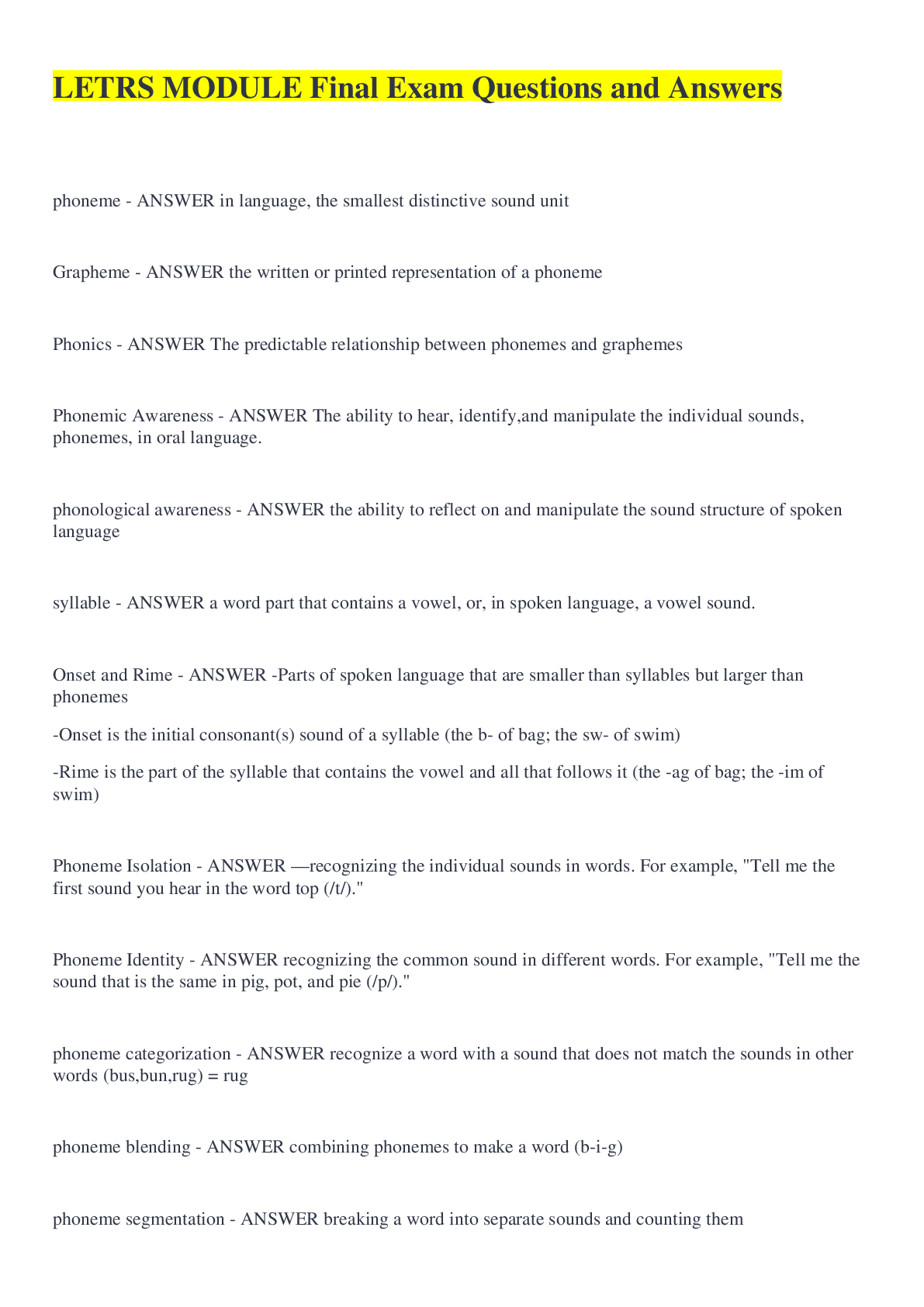
Buy this document to get the full access instantly
Instant Download Access after purchase
Buy NowInstant download
We Accept:

Reviews( 0 )
$7.00
Can't find what you want? Try our AI powered Search
Document information
Connected school, study & course
About the document
Uploaded On
Sep 26, 2022
Number of pages
4
Written in
Additional information
This document has been written for:
Uploaded
Sep 26, 2022
Downloads
0
Views
54



